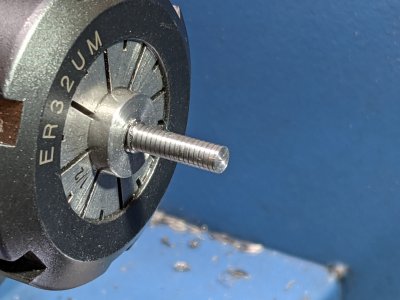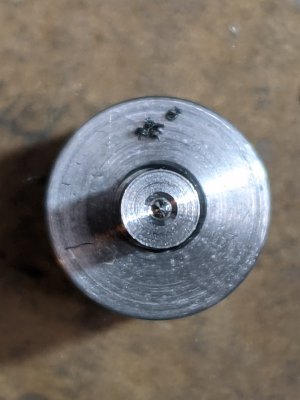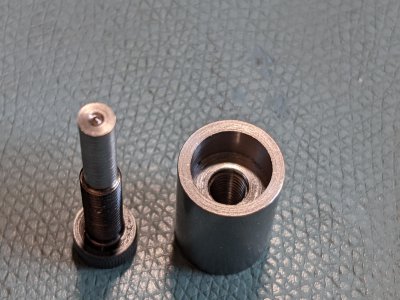- Joined
- Dec 18, 2019
- Messages
- 6,536
I haven't tried that in recent memory. Looking at the relative position of the screws, I could see it might possibly rotate the assembly in the horizontal plane up until it uses up the slop in the keyway. I can try it, (and will) but it seems one could have it correct in only one position of the quill. I'd like to be able to horizontally translate the tailstock, perpendicular to the the lathe spindle as well as having a minor rotation.
As I understand it, the set screw allows horizontal relative movement if it is loose, AND the bottom screw is loose. The set screw does not really change the relative position, it is only a lock. It could have the ability to affect a very small amount of rotation. The idea for a screw like in tailstock adjuster is to be able to easily set the horizontal position. A differential adjuster mod (in my opinion) would make a finer adjustment possible. Whether or not it is really practical, that depends on my limited machining abilities, at the moment.
If my understanding is not right - please correct me! I'm on HM to learn.
Practically, I can tap the tailstock into alignment with much iteration and muttering. I was hoping a differential screw would minimize the blue words and increase the precision. It certainly has been interesting reading about it and designing it.
As I understand it, the set screw allows horizontal relative movement if it is loose, AND the bottom screw is loose. The set screw does not really change the relative position, it is only a lock. It could have the ability to affect a very small amount of rotation. The idea for a screw like in tailstock adjuster is to be able to easily set the horizontal position. A differential adjuster mod (in my opinion) would make a finer adjustment possible. Whether or not it is really practical, that depends on my limited machining abilities, at the moment.
If my understanding is not right - please correct me! I'm on HM to learn.
Practically, I can tap the tailstock into alignment with much iteration and muttering. I was hoping a differential screw would minimize the blue words and increase the precision. It certainly has been interesting reading about it and designing it.




